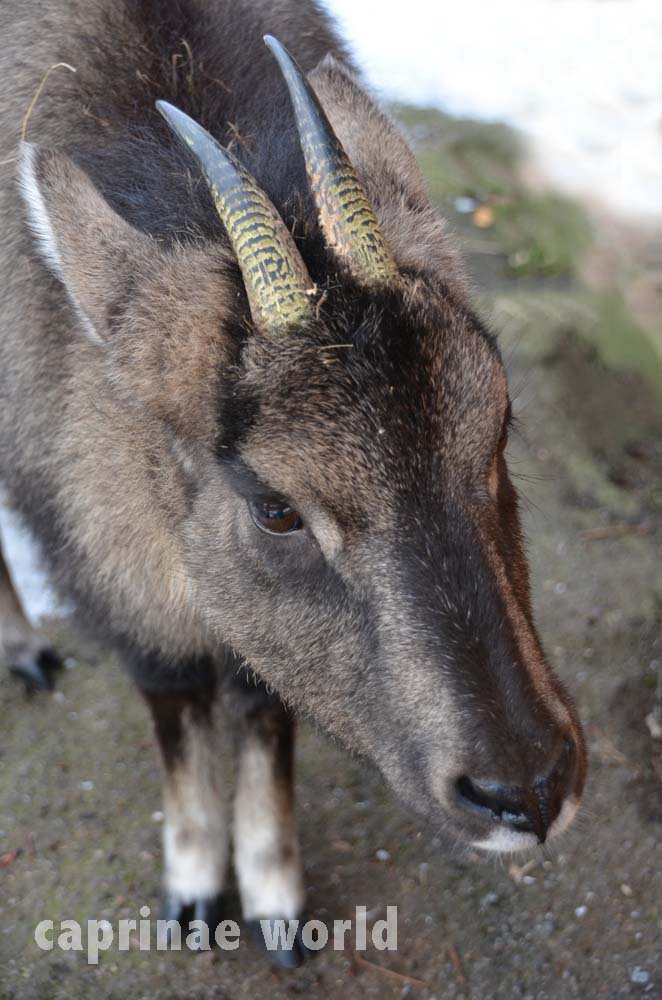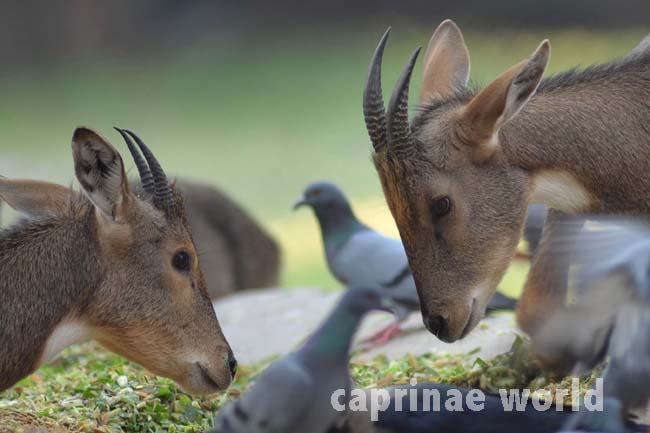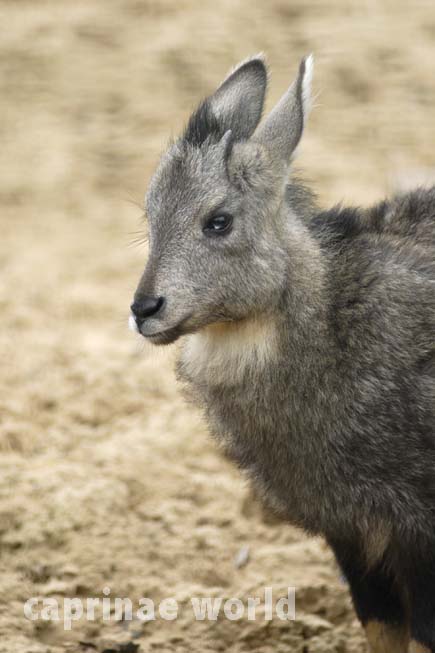The horns of goral males and females are in general very similar. But there are ways to tell both sexes by their horns apart.
These visibly distinguishing marks are mentioned in the literature (1, 2, 3)
- Horns of Himalayan Goral ewes are shorter (1) and noticeably more slender. (3)
- Horns of Red Goral males tend to be thicker, more curved and wider spaced. (1)
- The horns of very old rams show more of a terminal curve. (1)
- Horn rings in ewes are less distinct than in rams.
- The horns of males in Red Goral have more grooves, mostly 10 . The number of grooves for females is not higher than 6. (2)
Gallery of goral portraits
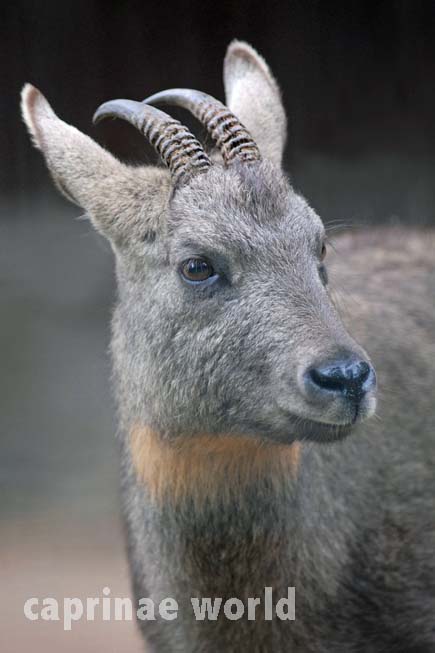
Chinese Goral (Nemorhaedus griseus), male, age: 7 years, 5 month. Note: horns are strongly curved; horn rings are pronounced. Photo taken at: Tierpark Dresden, Germany.
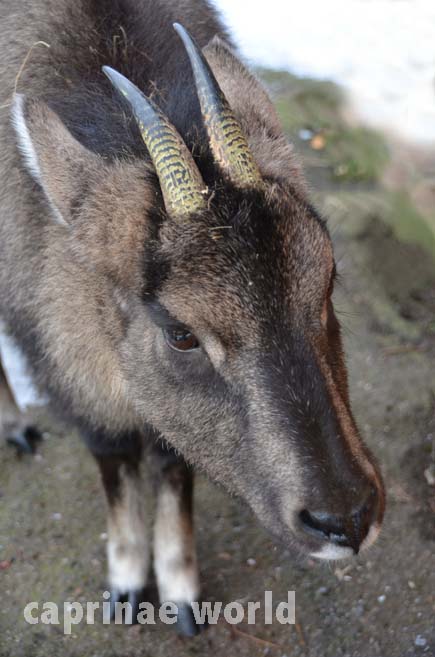
Amur Goral (Nemorhaedus caudatus raddeanus), female, age: 6 years, 3 month. Note: horns are only slightly curved. Photo taken at: Tallinn Zoo, Estonia
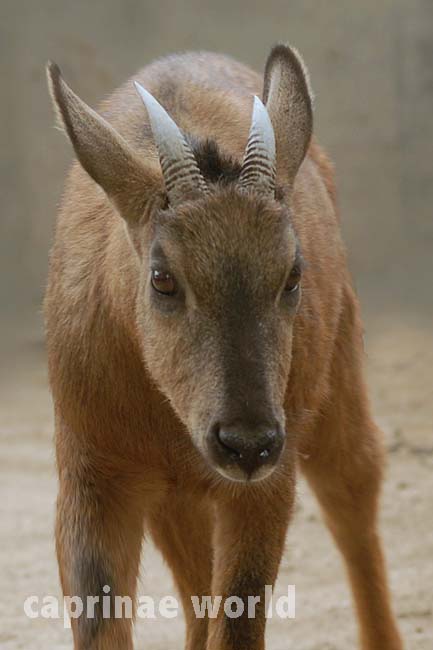
Red Goral (Nemorhaedus cranbrooki), male. Note: diameter of horns at base strong; horn rings prominent, but partially worn off. Photo taken at: Beijing Zoo, China
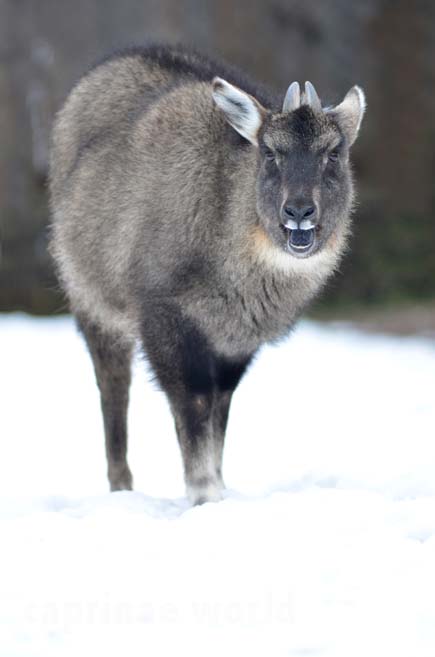
Amur Goral (Nemorhaedus caudatus raddeanus), female, age: 14 years, 3 month. Note: The horns are reduced to stumps; horn rings are scuffed; horn tips converge. Photo taken at: Tallinn Zoo, Estonia
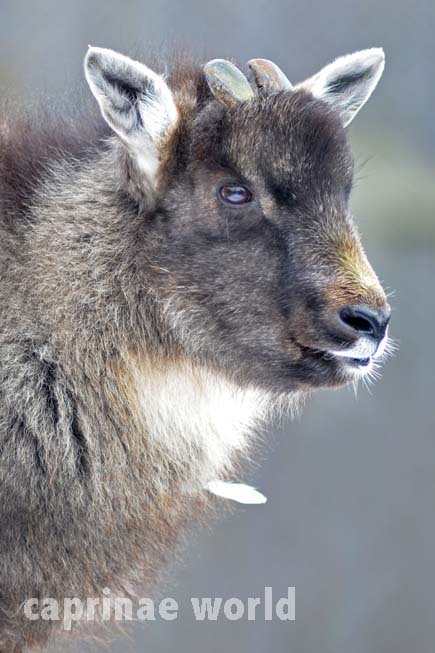
Amur Goral (Nemorhaedus caudatus raddeanus), male, age: 16 years, 5 month. Note: The horns are reduced to stumps; horn rings are scuffed; horn tips diverge. Photo taken at: Tallinn Zoo, Estonia
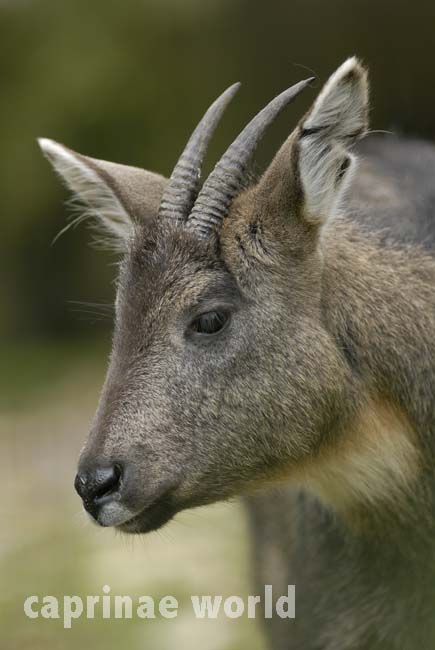
Chinese Goral (Nemorhaedus griseus). Note: Horns appear small in diameter and are rather straight. Photo taken at: Tierpark Berlin, Germany.
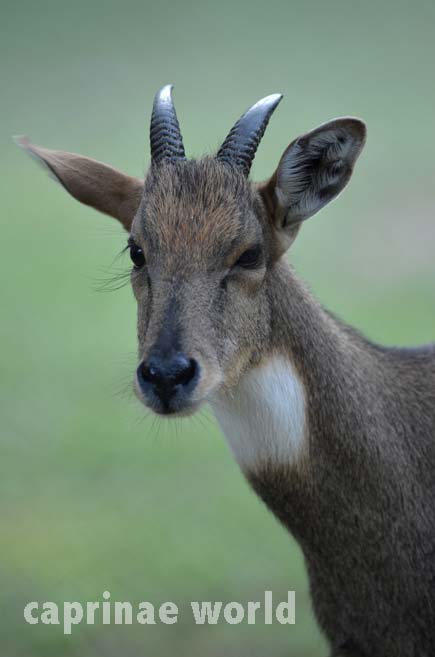
Himalayan Brown Goral (Nemorhaedus goral), male. Note: Horn diameter is relatively strong; horn tips are diverging; horn rings in the center are worn down. Photo taken at: National Zoological Park Delhi, India
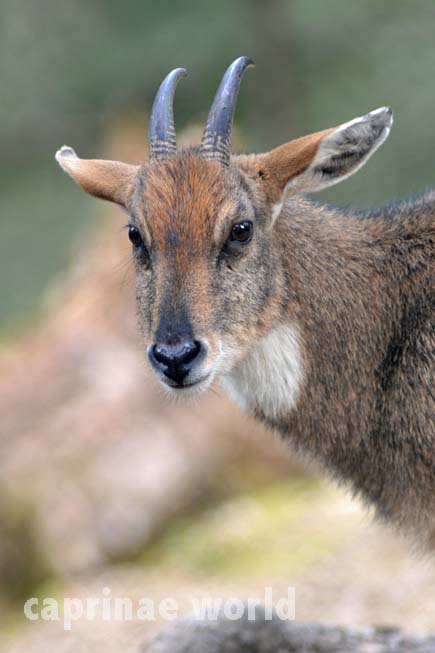
Himalayan Brown Goral (Nemorhaedus goral), male. Note: Horns are long; horns show a terminal curve; horn rings in the center are worn down. Photo taken at: Kufri Zoo, India
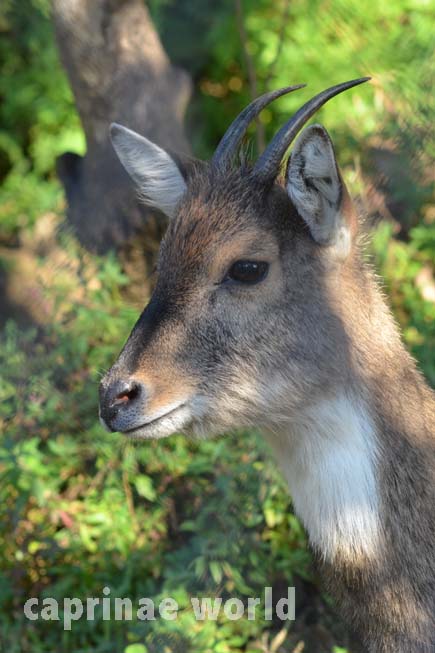
Himalayan Brown Goral (Nemorhaedus goral), female. Note: Horn diameter is relatively thin; horns show a slight, steady curve; horn rings are hardly marked. Photo taken at: Nainital Zoo, India
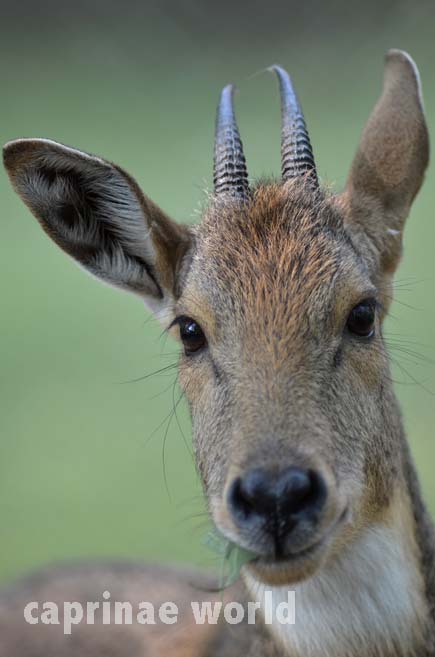
Himalayan Brown Goral (Nemorhaedus goral), female. Note: Horn diameter is relatively thin; horn tips are merging; horn rings are rather pronounced. Photo taken at: National Zoological Park Delhi, India
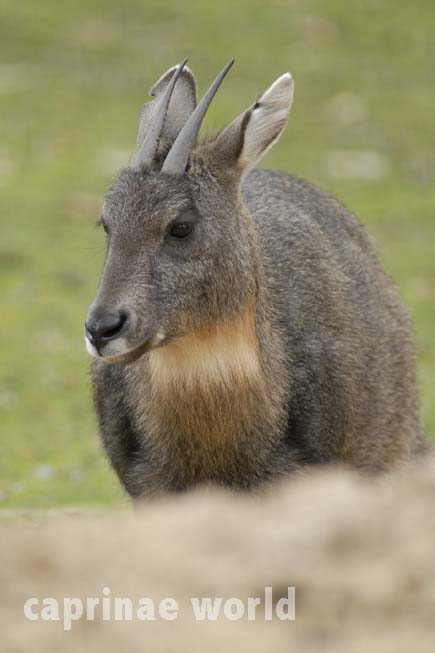
Chinese Goral (Nemorhaedus griseus), female. Note: Horns appear small in diameter and are straight; horn rings on complete front are worn down. Photo taken at: Tierpark Berlin, Germany.
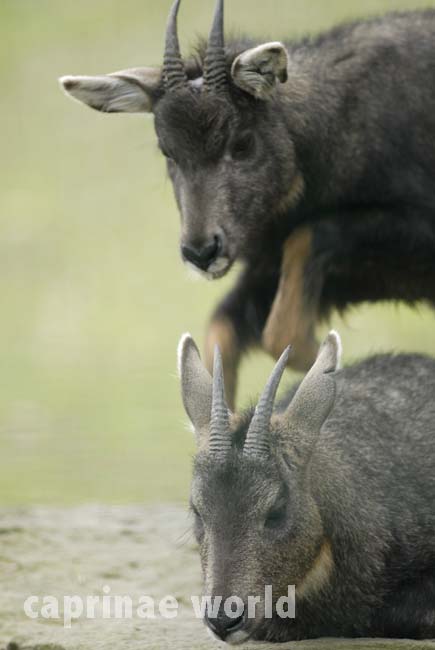
Chinese Goral (Nemorhaedus griseus), male (on top) and female. Note: Horns at base of both animals fairly strong; right horn of male shows terminal curve; horn rings of the male more pronounced; horn tips in the male converging, in the female diverging. Photo taken at: Tierpark Berlin, Germany.
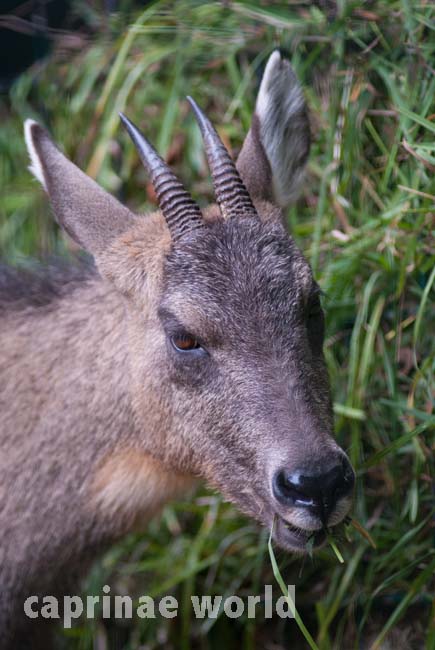
Chinese Goral (Nemorhaedus griseus), female, age: 6 years, 4 month. Note: horns are straight; horn rings are rather pronounced. Photo taken at: Tierpark Dresden, Germany.
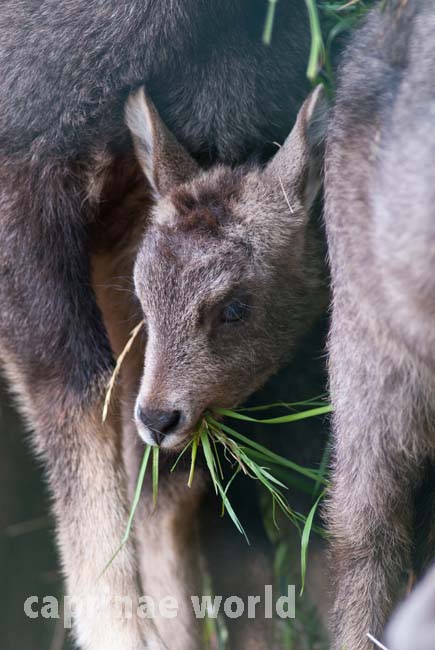
Chinese Goral (Nemorhaedus griseus), kid, age: 3 month. Note: horns not yet visible. Photo taken at: Tierpark Dresden, Germany.
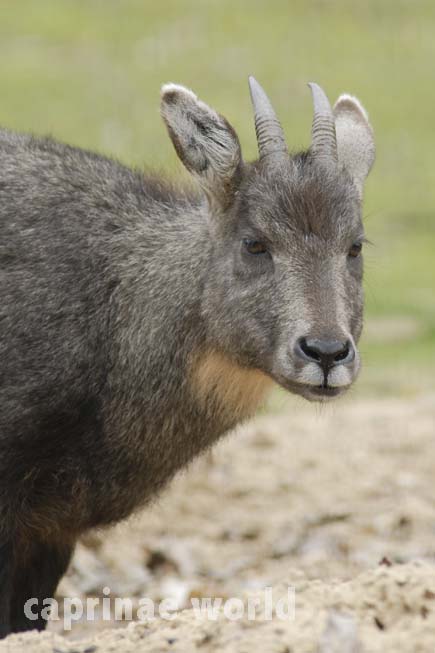
Chinese Goral (Nemorhaedus griseus), female. Note: Horns are relatively strong; horn rings and curve are rather inconspicuous; diameter of horns at base and midway is pretty identical. Photo taken at: Tierpark Berlin, Germany.
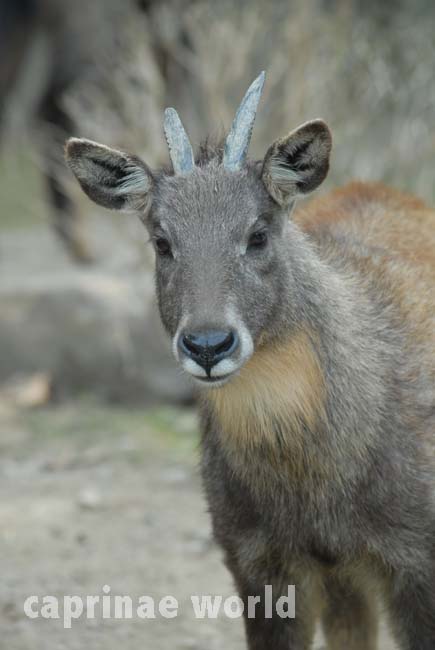
Chinese Goral (Nemorhaedus griseus), female. Note: Horns are straight; right horn is brocken off; horn rings on complete front are worn down. Photo taken at: Shanghai Zoo, China
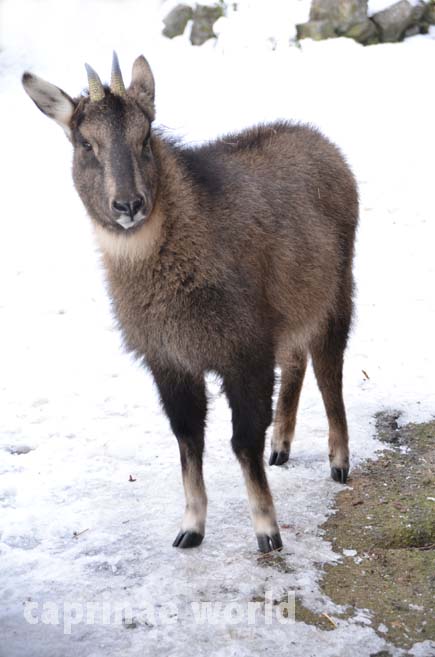
Amur Goral (Nemorhaedus caudatus raddeanus), female, age: 6 years, 3 month. Photo taken at: Tallinn Zoo, Estonia
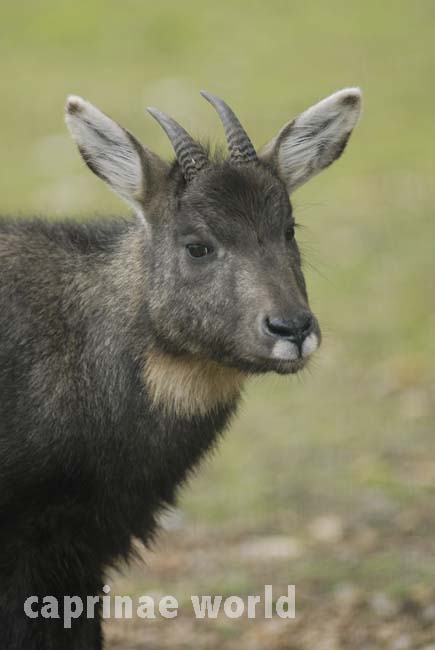
Chinese Goral (Nemorhaedus griseus), male. Note: Horns appear small and less curved; left horn shows terminal curve. Photo taken at: Tierpark Berlin, Germany.
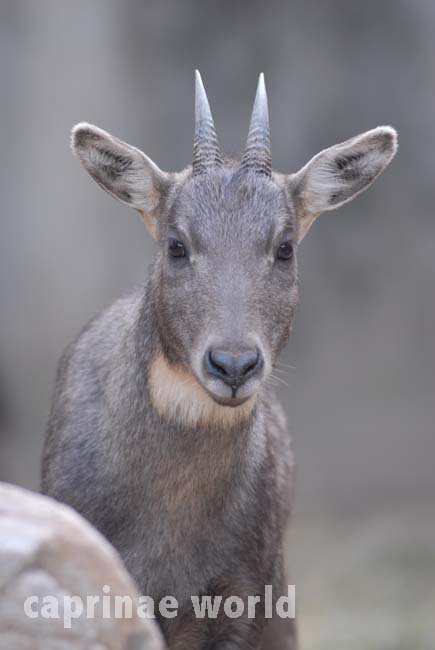
Chinese Goral (Nemorhaedus griseus), presumably female. Note: Horns are straight; horn diameter differs at base and halfway. Photo taken at: Shanghai Zoo, China
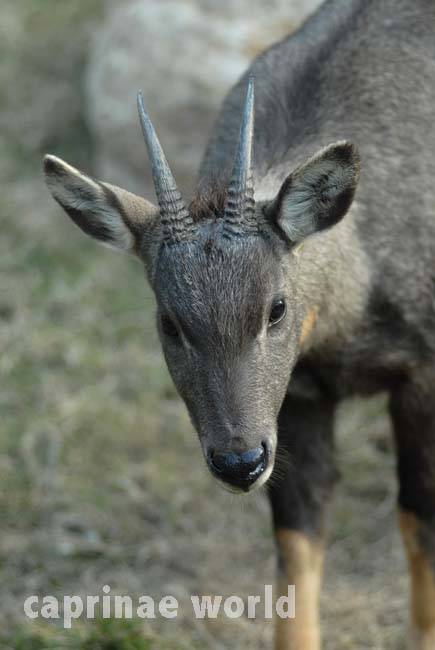
Chinese Goral (Nemorhaedus griseus), presumably female. Note: Horns appear straight; horn diameter differs at base and halfway. Photo taken at: Shanghai Zoo, China
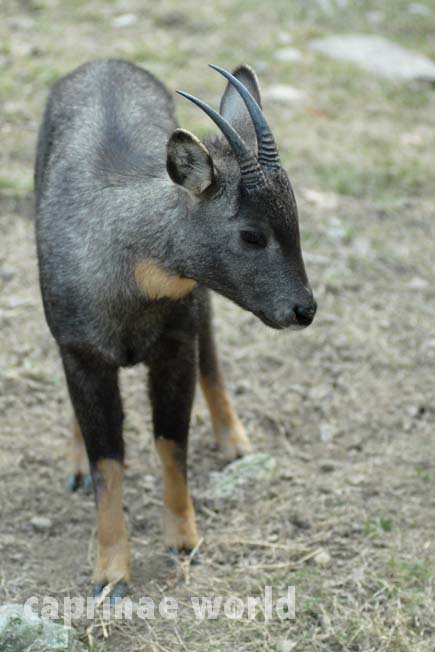
Chinese Goral (Nemorhaedus griseus), sex unknown. Note: Horns are long and curved, but are relatively thin. Photo taken at: Shanghai Zoo, China
Summary and determination approach
Principles in goral horn characteristics are prone to deviations, often to the extent that the principles are statistically correct, but not obvious any more. Hence the more distinguishing marks apply, the more secure your estimation is. Example: If your goral has long horns, it could be a male. If your goral has long horns, the diameter of the horns at base is strong and horn rings are pronounced, it should be a male. If your goral shows longs horns, the diameter of the horns at base is strong, horn rings are pronounced and the horns come with a terminal curve, it is most certainly a male.
Literature cited
(1) Damm, Gerhard R. and Franco, Nicolás, 2014: The CIC Caprinae Atlas of the World – CIC International Council for Game and Wildlife Conservation, Budakeszi, Hungary in cooperation with Rowland Ward Publications RSA (Pty) Ltd., Johannesburg, South Africa.
(2) Hrabina, Petr: „A new insight into the taxonomy and zoogeography of recent species of goral (Nemorhaedus, Bovidae, Ruminantia)“, Gazella 42, 2015, Zoo Praha
(3) Wilson, D.E. and Mittermeier, R.A. [eds], 2011: Handbook of the Mammals of the World. Vol. 2. Hoofed Mammals. Lynx Edicions, Barcelona.

